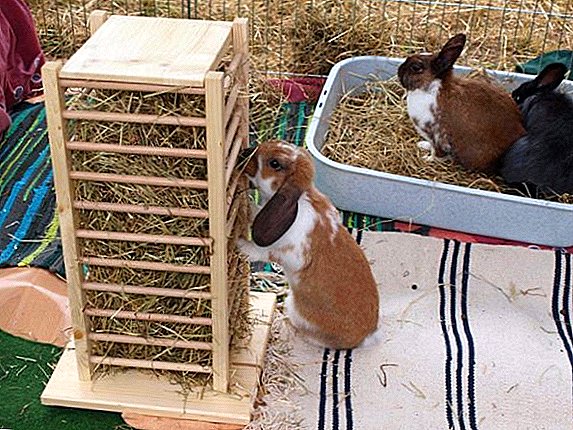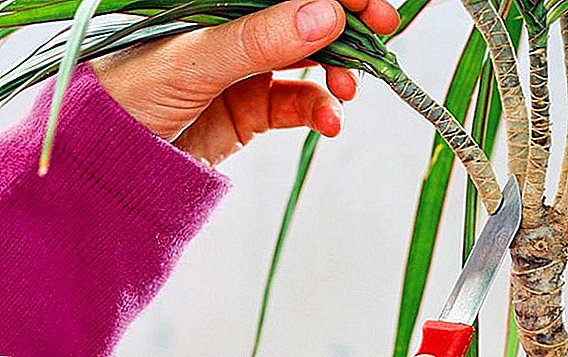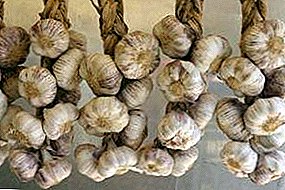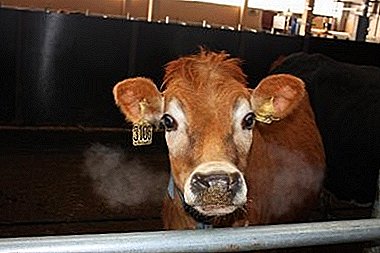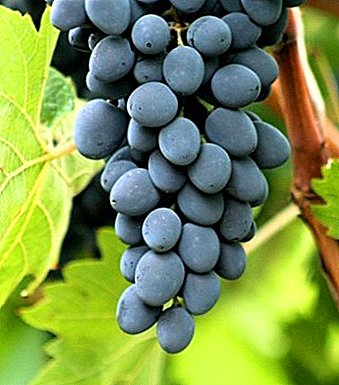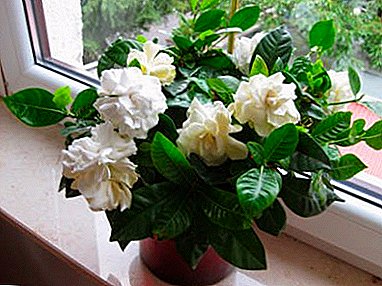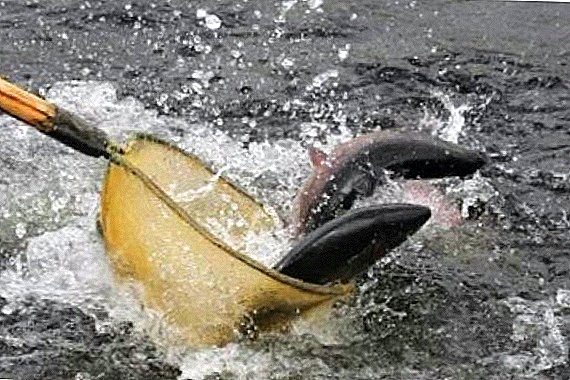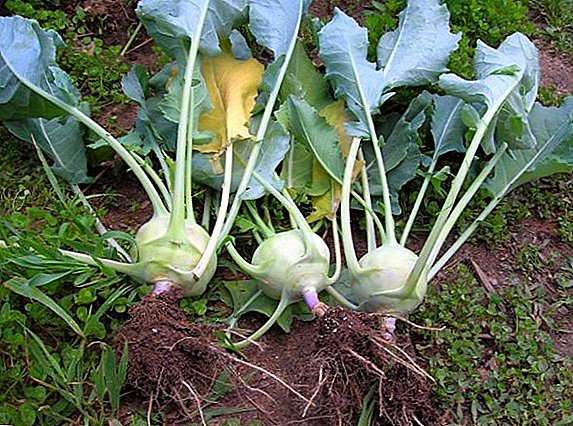 This kind of cabbage came to us from Sicily. Enjoys great popularity in Western Europe and Turkey. Local gardeners know how to grow kohlrabi cabbage, After all, it is considered to be a vitamin bomb and surpasses its other relatives in taste.
This kind of cabbage came to us from Sicily. Enjoys great popularity in Western Europe and Turkey. Local gardeners know how to grow kohlrabi cabbage, After all, it is considered to be a vitamin bomb and surpasses its other relatives in taste.
Little about kohlrabi
Kohlrabi - This is an early cabbage, high-yielding. The first crop with proper care can be removed after 2.5 months after planting. Shows high resistance to diseases and pests. Possesses the mass of useful properties, it is a valuable dietary product. Perfectly gets on alongside other garden crops. Unfortunately, in our region it is not sufficiently estimated by gardeners, therefore, it does not have high popularity as a vegetable crop.
Proper fit of kohlrabi cabbage
 With the right agrotechnical approaches, you can get two crops of cabbage. It is important to meet deadlines when exactly plant kohlrabi, to provide for her the appropriate conditions of planting and care. Taking into account all aspects that affect the growing season and ripening of kohlrabi cabbage, you will easily enjoy this vegetable.
With the right agrotechnical approaches, you can get two crops of cabbage. It is important to meet deadlines when exactly plant kohlrabi, to provide for her the appropriate conditions of planting and care. Taking into account all aspects that affect the growing season and ripening of kohlrabi cabbage, you will easily enjoy this vegetable.
Soil requirements
Light is important for kohlrabi, therefore, the lighted areas are selected for planting and are specially prepared soil for cabbage seedlings. Prepare for planting and kohlrabi seeds. Shoots cabbage not demanding to soil, kohlrabi can grow on any soil.
But in order to get a big harvest and more juicy fruits, the ground should be well drained and have neutral acidity or be slightly acidic. The fertile and prepared soil will abundant foliage on the vegetable, and the fruit itself will become larger. In the soil should be enough nitrogen, phosphorus, potassium, and it should not be acidic.
In the absence of these conditions, the foliage will be bad, and the fruit will not grow juicy and, accordingly, not tasty. Kohlrabi will grow well in areas where legumes, onions, carrots, potatoes, cucumbers and beets were grown before it. After collecting these predecessors, you can begin to prepare the soil for planting seedlings of kohlrabi cabbage for the next year.
Optimum landing time
 Doing the first planting cabbage seedlings in open ground, focus on the May holidays, so you definitely will not lose when it is necessary to plant kohlrabi. Kohlrabi seedlings can be planted in several visits starting from May, then in June and in July.
Doing the first planting cabbage seedlings in open ground, focus on the May holidays, so you definitely will not lose when it is necessary to plant kohlrabi. Kohlrabi seedlings can be planted in several visits starting from May, then in June and in July.
By the first planting of kohlrabi, its seedlings have two pairs of leaves, and its “age” is 40-45 days.
After disembarking in early May, you will be able to harvest in early June. In May, sow the seeds for the second planting of seedlings. And the seeds sown at the end of June will be seedlings, which you can harvest in October.
Growing kohlrabi seedling method and sowing seeds in the ground
This view toapostas allows not only seedlings, but even seeds produce landing in open ground.
In order to grow at home suitable for planting Kohlrabi seedlings, it is necessary to perform a number of tasks:
- prepare the ground;
- process the seeds and harden them;
- ensure optimum temperature;
- time to dive seedlings;
- harden the seedlings before planting in open ground.
 Seeds should be sown in the grooves, the distance between which is 3 cm, and between the seeds - not less than 1 cm, we deepen into the soil by 1 cm.
Seeds should be sown in the grooves, the distance between which is 3 cm, and between the seeds - not less than 1 cm, we deepen into the soil by 1 cm.
Next, we cover the trays or boxes with seeded seeds, creating a greenhouse effect. The temperature inside should be up to +20 ° С. After the first shoots appear, reduce the temperature to +9 ° С for a week. Then we maintain the temperature at + 15 ... +18 ° С.
Cabbage kohlrabi does not require much effort in growing, but when her plant on seedlingsdepends on the timing of the planned planting of the plant in the ground. When our shoots will be the first sheet, you can dive seedlings.
Important! After the dive, we raise the temperature to +20 ° C and maintain it until the seedlings take root.
After that, follow the street temperature. It is equally important to harden the seedlings before planting in open ground. Before planting, but no less than 2 hours, the seedlings must be watered well.
Before sowing kohlrabi seeds into the ground, they must be prepared. We make contrasting seed baths: first we place them in water at 50 ° С for 15 minutes. Then in cold water for 1 minute. After such a procedure, we soak the seeds for 12 hours in water, where previously useful trace elements have been dissolved. After soaking the seeds, rinse and leave for a day in the refrigerator.
 We dry the seeds before planting. Now you can sow them. This is best done in late April - early May.
We dry the seeds before planting. Now you can sow them. This is best done in late April - early May.
Deepen the seeds by 1.5-2 cm. The distance between the rows should be 50 cm, and between the seeds - 3-4 cm. As soon as leaves appear on the plants, thin out and leave sprouts every 7-8 cm. Thin them a second time. when the leaves of the plants close together, the distance between the seedlings should be about 20 cm.
Did you know? 7 days before planting kohlrabi in open ground, its seedlings are no longer watered.
Scheme and depth of landing
There are many tips that how to plant cabbage seedlings in open ground. We want to share proven options.
When planting seedlings need to be planted to a depth before the beginning of the growth of the first leaves. Determine the readiness of seedlings for planting can be by the number of leaves on the plant - there should be 5-6. It is better to plant seedlings on a cloudy day or in the evening. Also, it will not be superfluous to shade for a couple of days after disembarkation.
For early varieties of kohlrabi, a landing pattern of 60 x 20/70 x 30 cm is suitable, for late varieties - 60 x 40/70 x 45 cm. Kohlrabi varieties with fewer leaves can be planted and thicker.
Did you know? In order to speed up the process of kohlrabi ripening, try to seedlings after planting, cover with foil or agrofibre. In this case, the seedlings should not be deepened very much.

If you decide to sow the seeds immediately into the ground, then this is done in the grooves, closing 2-2.5 cm deep. Further we carry out thinning of shoots, leaving the strongest.
The subtleties of growing and care for kohlrabi cabbage
Cabbage kohlrabi although unpretentious, but still needs the right landing and care.
Remember that Kohlrabi loves light, so put it on the south or southeast side of the plot.
Important! In dry weather, kohlrabi are watered with warm water, and the soil is loosened and the watering itself is produced in the evening.
Sow seedlings on seedlings to ensure that Kohlrabi is present on the table as long as possible.
When growing kohlrabi, it is important to comply with all agrotechnical requirements, otherwise, the plant may release an arrow, or the seedlings will outgrow and be unsuitable for planting.
 After planting the seedlings, the soil should be compacted, the plants should be watered abundantly and covered with earth to reduce the evaporation of moisture. On the garden it is important to carry out thinning, moisten the soil.
After planting the seedlings, the soil should be compacted, the plants should be watered abundantly and covered with earth to reduce the evaporation of moisture. On the garden it is important to carry out thinning, moisten the soil.
Important! In-depth planting of Kohlrabi seedlings harms the formation of the fruit and can provoke the flowering of the plant.
Watering and dressing cabbage
Kohlrabi loves moisture and needs regular watering. After planting cabbage it needs to be watered every 2-3 days. As you grow, you can then water it once a week, but do not over-moisten the soil, because it can provoke a number of diseases.
Kohlrabi cabbage dressing is carried out 3-4 times per season at intervals of 10-12 days. The first dressing is done with chicken manure, the second with rotted manure, and then mineral fertilizers and peat oxide are added.
Important! Kohlrabi cabbage is very necessary watering in June.
Soil loosening
For kohlrabi it is very important that the soil breathes. For this you need on the site where you produced planting cabbage seedlings, regularly loosen the soil. After each watering, it is important to fluff the soil to a depth of 8 cm.
The benefits of loosening are more than obvious:
- makes the soil structural;
- increases its oxygen saturation;
- accelerates the decomposition of organic matter;
- promotes the accumulation of beneficial elements for the plant;
- prevents excessive evaporation of moisture;
- interferes with emergence of weeds since allows to destroy their shoots.
Pest protection
Cabbage care Kohlrabi is not complicated, it is similar to the one we use for white cabbage, but the pests are the same.
 Kohlrabi Diseases:
Kohlrabi Diseases:
- blackleg;
- kila;
- mucous bacteriosis;
- downy mildew (peronospora).
- cruciferous flea;
- cabbage fly;
- snails and slugs;
- aphid, cabbage scoop and whitegrass.
Such a method as treating with ashes and spraying with a solution of tar soap has proven itself well. A tobacco solution will cope with a cabbage fly, or a scaring mixture with ashes, pepper and tobacco is prepared.
With such a disease as the keel, you can cope with the liming of the soil.
Important! If the keel was spread on the site, then cabbage should not be planted here for another 5 years.
Harvesting and storage
 It is possible to collect cabbage within 2 months after planting, but no later than the fruit in diameter will reach 6-10 cm. The fruit is considered to be optimal with a size of 8 cm in diameter. Many growers love to harvest and smaller fruits. If you overdo the kohlrabi harvest, the fruit will become stiff and tasteless, most nutrients will be lost.
It is possible to collect cabbage within 2 months after planting, but no later than the fruit in diameter will reach 6-10 cm. The fruit is considered to be optimal with a size of 8 cm in diameter. Many growers love to harvest and smaller fruits. If you overdo the kohlrabi harvest, the fruit will become stiff and tasteless, most nutrients will be lost.
Store kohlrabi from the garden can be in the refrigerator. There it can be kept for up to 1 month without losing all its healthy and taste properties. The leaves should be wrapped in a damp cloth and put in a plastic bag that should not be tied.
For long-term storage collect late kohlrabi. They do it approximately at the same period when the white cabbage is harvested. At the same time, the air temperature should not be lower than 3-5 ° C even before frosts.
Late varieties of kohlrabi — Gigantic, Blue Delicacy, and Violetta — are suitable for long-term storage after repeated plantings in June. Kohlrabi must be stored at 0 ° C and 95% humidity.
Did you know? It is the purple fruits of kohlrabi that are stored longer than light green ones.
After harvesting kohlrabi from the garden, we cut the leaves, leaving 2 cm near the fruit. Plants are pulled from the soil along with the roots. The root is best left and not cut. Fruits we put in boxes or ventilated baskets and we pour in sand, but not river.
 If the harvest of kohlrabi fruits is poured with wet sand and stored in the cellar, then the storage period will be 5-8 months. There is also a way to keep kohlrabi and up to 9 months. This method is freezing. Wash kohlrabi, peel, chop and blanch for 3 minutes. Then let cool, pack and freeze.
If the harvest of kohlrabi fruits is poured with wet sand and stored in the cellar, then the storage period will be 5-8 months. There is also a way to keep kohlrabi and up to 9 months. This method is freezing. Wash kohlrabi, peel, chop and blanch for 3 minutes. Then let cool, pack and freeze.
Using these tips, you can easily grow kohlrabi cabbage in your garden and get healthy vitamins until next season.


